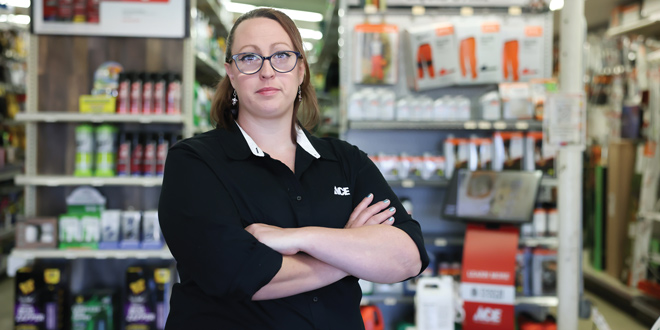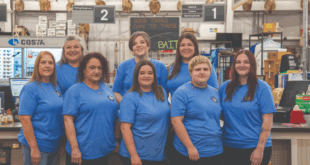From organized smash-and-grabs to employee embezzlement and fraud, retailers have been reeling from an increase in asset and product loss since the start of the pandemic. Theft and fraud have always been an unfortunate part of the retail scene, but the pandemic has brought on additional challenges.
According to the 2021 Retail Security Survey, published by the National Retail Federation, 69% of retailers saw an increase in organized retail crimes in the 12 months prior. Nearly 65% of retailers indicated that organized retail crime (ORC) became more of a priority last year, and 53% said internal theft was a higher priority. During the pandemic, 22% of retailers saw a significant increase in ORC, and 16% experienced significantly higher rates of shoplifting.
The pandemic can’t take all the blame for the increase in retail losses, however. The growth of online shopping has led to more cybercrimes while increased felony thresholds, where thefts under a certain dollar amount aren’t prosecuted as felonies or at all, have led to more brazen criminals and incidences of retail crime. In the 2020 Organized Retail Crime Survey, two-thirds of retailers reported seeing an increase in the average ORC case value in states that raised the threshold for felony theft.
Fortunately, just as criminals are getting smarter and bolder, loss prevention programs have also evolved to offer better protection against asset and product losses. Loss prevention is a topic many retailers deem important but it can be hard to address. To aid retailers in tackling this key part of any operation, Hardware Retailing shares best practices from fellow retailers for protecting against these types of losses.
Turn to Technology
When it came to loss prevention methods, each of the three Ninth Avenue Hardware Co. locations in Colorado were utilizing basic methods and equipment like security cameras and training to spot red flags. Samantha Pavich, HR and marketing specialist for Ninth Avenue Hardware Co., says customer theft is one of the company’s biggest concerns and an issue that has increased since the start of the pandemic.
“We have those who come in and do the concealment thing, putting items in a bag or under a big jacket,” Pavich says. “More recently and more frequently, we’ve had people run in, grab items and run out.”
The stores were using security cameras but management found they weren’t as effective as they needed them to be.
“Even with the cameras, you need someone watching them all day,” Pavich says. “If you do catch someone, you’re probably chasing them down because they’ve already moved on by the time you can get to them.” Pavich was looking for more technology-based loss prevention solutions to complement and integrate with existing methods.
Thanks to conversations with fellow retailers at the operation’s co-op convention, Pavich discovered Veesion, an artificial intelligence (AI) software that detects theft in real-time using existing security camera infrastructure.
“We were looking for a solution that would allow us to see what was happening without having to constantly watch the security cameras. So many times we would question, ‘Is this person really trying to steal from us?’ or ‘What is this person doing?’ but with Veesion, you can be away from the cameras but still get an alert to see issues unfolding,” Pavich says. “You can see it happening and confront them in real time right there in the store.”
Veesion analyzes video streams and looks for gestures commonly associated with shoplifting, says Hiren Mowji, Veesion country manager for the Americas. Veesion has partnered with Watcher Total Protection to offer home improvement retailers a customized system that better meets their needs. The partnership also allows Veesion to provide stateside support.
When the AI senses a potential shoplifter, a real-time video alert is sent to the retailer via communications platforms like WhatsApp, Telegram, Google Chat and other third-party applications.
Because Ninth Avenue Hardware Co. is new to the Veesion platform, it is only being used at the largest store, A&A Tradin’ Post Ace Hardware in Englewood, Colorado, with plans to eventually add it to the two other locations.
In the short time since Ninth Avenue Hardware Co. has been using the technology, it’s been a useful addition to the operation’s already-established loss prevention programs, says manager Debra Riedel. It has changed the way the company approaches loss prevention training for employees, providing them with more concrete examples of what to look for and how to be responsive.
“The technology has allowed us to recognize different opportunities where we can expand on-the-floor-training and work with the management team to make all of our associates feel safe and comfortable,” Riedel says. “We didn’t expect it to magically fix all of our problems, but it has helped us figure out an internal system that works with the technology.”
Even with using the technology in just one location, the operation has been able to see where its weak points are in loss prevention, Pavich says.
“It’s been a learning opportunity for us,” she says. “It has shown us what we need to work on in training to get our managers and associates to respond quicker and more efficiently.”
Take Advantage of Training
The recent labor shortages have impacted many areas of business, including loss prevention strategies. At Ninth Avenue Hardware Co. stores, thefts tend to happen more frequently during times when fewer employees are working, like Sunday evenings, or when employees are busy and can’t devote the extra time to keeping an eye out, Pavich says.
“The labor shortages and staffing issues definitely haven’t made things any easier,” Pavich says. “Thieves see it and are taking advantage of the opportunity.”
Even if you are working with fewer employees, offering thorough training on theft and loss can be beneficial. At Redbud True Value in Lubbock, Texas, store manager Kyle Riddle says his operation’s best loss prevention method is training employees to offer excellent customer service, including greeting every customer who walks through the door and inquiring how they can help.
Employees are also trained to be observant of unusual customer behaviors such as wearing coats in the middle of the summer or carrying oversized bags.
“As another layer of customer service, we walk our customers to the products they are looking for instead of just pointing to a part of the store,” he says. “While we don’t crowd the customer, we do offer exemplary service, which most customers appreciate unless their intent is to shoplift. Simply realizing we are aware of everyone’s presence in the store through great customer service oftentimes is an effective enough deterrent that changes a potential shoplifter’s mind.”
Riddle says he has equipped each employee with a walkie-talkie so they can communicate more effectively with one another on the salesfloor. He has also implemented a code system employees use over the walkie-talkies to indicate possible issues in the store and alert other employees to issues as they happen.
“I know for a fact our walkie-talkie chatter has twice prevented shoplifting incidents in the store,” Riddle says. “They are another tool we use to let people know we are aware and are communicating about the store with one another, whether it be routine business or potential theft issues.”
The management team at Hupp Hardware in Wichita, Kansas, also relies on well-trained employees to prevent theft. Susan Lamers, one of the owners, says they train employees to wait on every customer so they come to expect to be asked if they need assistance multiple times.
“Any customer who is upset by our employees coming around to help is usually not a true customer at all,” Lamers says. “If they complain to me about being followed around, I smile and say, ‘You must not have shopped here before. We want to give personal service to each person who comes in.’ And then I make sure they see other customers are getting the same attention.”
Keep It Simple
While technology helps prevent theft, sometimes simpler methods can be as effective. Lamers says the biggest issue the store deals with is shoplifting and it relies on straightforward ways to combat theft like security cameras, which they continually upgrade.
“Although we often find the culprit after the fact, if they return, we are able to make them leave the store,” Lamers says. “I save photos of shoplifters and their vehicles on my cell phone, and we can refer back to the photos if the person comes in.”
Lamers says they have replaced low-to-the-ground tinted windows with steel plates and added discreet metal trim to the doors and windows to make entry more of a challenge.
“Replacing the broken window after a theft was usually more costly than the loss of items stolen,” Lamers says. “Since making those door and window modifications, we haven’t had an entry. We also have an alarm system, but the building modifications have been invaluable.”
For Redbud True Value, adding security mirrors throughout the store has served as a theft deterrent, Riddle says. He also put up additional security cameras to expose blind spots and installed a larger monitor at the front of the store where customers can see themselves on the security camera when they enter the store. Below the monitor is a professional sign that says, “Security Notice, We Prosecute Shoplifters.”
Riddle says he’s also hung signage that has a pair of eyes and states, “Shoplifters Will Be Prosecuted.”
“I read a study that said including a pair of eyes on the signage can deter shoplifting,” Riddle says. “The psychological effect of seeing the pair of eyes on the signage can give a potential shoplifter a change of mind and lead them to not steal. I believe the signage has helped in our store.”
Loss Prevention Sources for Your Organization
The North American Hardware and Paint Association offers several loss prevention resources to help retailers with these issues. For more information, visit YourNHPA.org/education.
External Theft Prevention. This module focuses on the most common type of external shrinkage—theft from shoplifting—and teaches current trends in shoplifting. It offers insights into why people steal and the most common methods they use, how to prevent shoplifting before it happens and how to confront a shoplifter.
Internal Theft Prevention. In this module, you’ll get insights into the different components that make up retail shrinkage. You’ll learn the whys behind employee theft, the financial impact internal theft has on retailers and ways to communicate the problem of internal theft to employees.
 Hardware Retailing The Industry's Source for Insights and Information
Hardware Retailing The Industry's Source for Insights and Information






